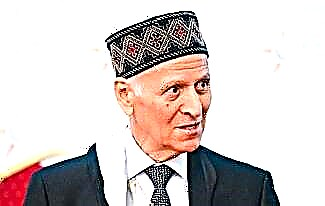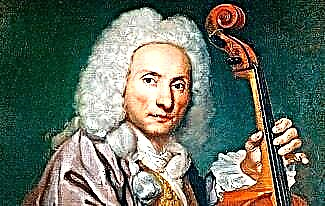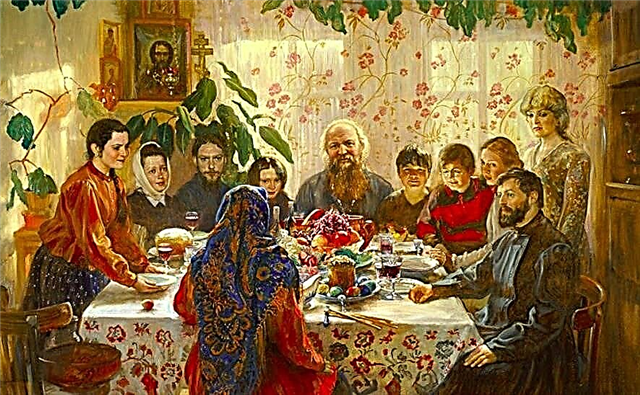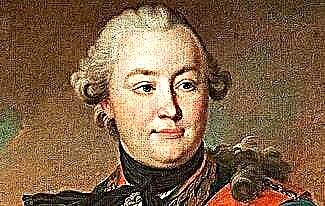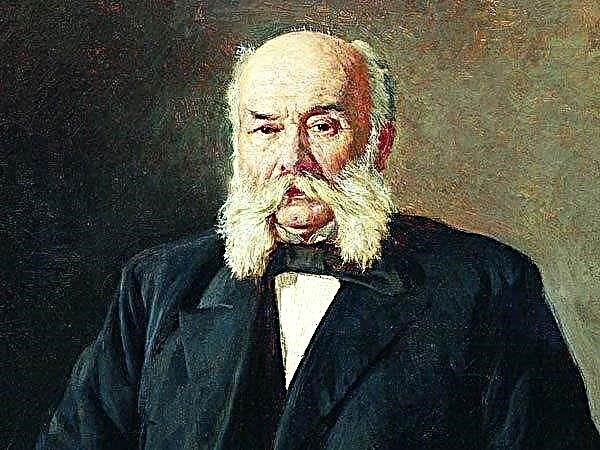The Church of the Intercession on the Nerl as a white lighthouse rises on a man-made hill above a flooded meadow, as if showing the way to wanderers. Thanks to its unique landscape and architectural composition, the creation of Russian architects is known far beyond the Vladimir region. Since 1992, the Church of the Intercession on the Nerl has been included in the UNESCO World Heritage List, and the meadow, where the Bogolyubsky temple is located, is part of the historical and landscape complex, which has regional significance.
The mysteries of the emergence of the Church of the Intercession on the Nerl
The history of the creation of the Church of the Intercession on the Nerl is full of inaccuracies and conjectures. Only one thing is known for certain - under which prince the temple was built. This white-stone masterpiece was erected during the time of Prince Andrey Bogolyubsky, the son of Yuri Dolgoruky.
It is difficult to name the exact year of construction. Most historians associate the construction of the temple with the death of Prince Izyaslav, as the desire of Prince Andrew to perpetuate the memory of his son. Then the date of foundation of the church can be considered 1165. However, in the historical reports it is said that the church was erected "in one summer," and the prince died in the fall. So, it is more fair to speak of 1166 as the date of the construction of the temple and the "single summer" mentioned in the biography of Prince Andrew.
An alternative is the opinion that the Church of the Intercession on the Nerl was erected simultaneously with the construction of the monastery ensemble in Bogolyubovo at the turn of 1150-1160. and has nothing to do with the death of the prince. According to this version, the construction of the temple is gratitude to the Most Holy Theotokos for patronizing the people of Vladimir in the battles with the Bulgars.
A legend is also associated with the Bulgars that the stone, impressive in its whiteness, was brought from the Bulgar kingdom, conquered by Andrey Bogolyubsky. However, subsequent studies completely refute this assumption: the stone in the conquered part of Bulgaria has a brownish-gray hue and differs significantly from the limestone that was used in construction.
Andrei Bogolyubsky was very sensitive to the feast of the Protection of the Most Holy Theotokos. At his insistence, the new church was consecrated in honor of the Feast of the Theotokos. From that moment on, widespread veneration of this holiday began and now you can find the Pokrovsky temple in almost every city.
The secret of architects
The Church of the Intercession on the Nerl is rightfully considered an architectural monument of not only national, but also world scale. For all the laconic forms, it is the brightest example of the Russian style of architecture and served as a canonical model in the design of other churches.
The place for the construction was not chosen by chance - in the old days there was an intersection of busy river and land trade routes, but rather unusual, because the temple was built on a flooded meadow in the place where the Nerl flows into the Klyazma.
The unique location required a non-standard approach to construction. In order for the building to stand for centuries, the architects used a non-standard technique in its construction: first, a strip foundation (1.5-1.6 m) was made, the continuation of which was walls almost 4 m high. Then this structure was covered with soil, the resulting hill became the foundation for the construction of the church. Thanks to these tricks, the church has successfully resisted the annual attack of water for centuries.
An interesting fact is that, according to some pictures from the annals of the monastery, the original image of the building was significantly different from the modern one. This is also confirmed by the excavations carried out in 1858 by the diocesan architect N.A.Artleben and in the 1950s by N.N. Voronin, a prominent specialist in the field of traditional ancient Russian architecture. According to their findings, the church was surrounded by vaulted galleries, which gave its decoration a resemblance to the solemnity and splendor of Russian towers.
Unfortunately, the names of those who built the masterpiece of Russian architecture have not survived to our times. Historians have established only that, along with Russian craftsmen and architects, specialists from Hungary and Malopolska also worked - this is indicated by the characteristic Romanesque features of the decor, skillfully superimposed on the traditional Byzantine basis.
The interior decoration is striking in its sophistication. The original painting has not survived, most of them were lost during the "barbaric" renovation in 1877, which, without coordinating with the diocesan architect, was started by the monastic authorities. The renovated and new design elements are so organically combined with each other that they create the impression of a single whole.
The temple also has its own architectural features: despite the fact that the walls are erected strictly vertically, it seems that they are slightly inclined inward. This is especially noticeable in the photos taken inside the church. This illusion is created by the special proportions and pillars that taper towards the top.
Another atypical feature of the church's decor is the carved reliefs depicting King David. His figure is central to all three facades. In addition to David, depicted with the psalter, the reliefs show paired figures of lions and doves.
Milestones in history
The fate of the Church of the Intercession on the Nerl is full of sad events. After the patron saint of the temple, Prince Andrei Bogolyubsky, died in 1174, the church was completely taken over by the brethren of the monastery. Funding ceased, and therefore the bell tower, which was originally planned as part of the architectural ensemble, was never erected.
The next disaster was the Mongol-Tatar devastation. When the Tatars took Vladimir in the 12th century, they did not ignore the church either. Apparently, they were seduced by utensils and other precious elements of decoration, which the prince did not skimp on.
But the most disastrous for the temple almost became 1784, when it belonged to the Bogolyubsk monastery. The abbot of the monastery set out to destroy the white-stone church and use it as building materials for the monastery buildings, for which he even received permission from the Vladimir diocese. Fortunately, he was never able to come to an agreement with the contractor, otherwise the unique architectural monument would have been lost forever.
A relatively "cloudless" life began at the temple only in 1919, when he entered the custody of the Vladimir provincial college for museums, already in the status of a monument of ancient Russian architecture.
In 1923, the services in the church ended and it was only the geographical location that saved it from destruction and desecration during the years of Soviet power (no one was interested in the area in the meadow, constantly flooded with water) and the status of the museum.
We recommend looking at the Church of the Savior on Spilled Blood.
Since 1960, the popularity of the church has increased from year to year, attracting more and more tourists and pilgrims. In 1980, restorers returned the church to its original appearance, but services were resumed only in the 1990s.
How to get there
The Church of the Intercession on the Nerl is located in the village of Bogolyubovo near Vladimir. There are several ways to get to the temple:
- choose one of the many excursions that travel agencies of Vladimir, Moscow and other large cities offer in abundance;
- use public transport. Buses # 18 or # 152 go from Vladimir to Bogolyubov.
- independently by car, GPS coordinates of the church: 56.19625.40.56135. From Vladimir, go in the direction of Nizhny Novgorod (M7 highway). After passing the Bogolyubsky monastery, turn left to the railway station, where you can leave your car.

Whichever option you choose, be prepared to walk about 1.5 km more. There is no entrance to the shrine. During the spring flood, the water rises several meters and can only be reached by boat; for a small fee, local entrepreneurial boaters offer this service.
However, no matter how much effort you spend on the trip, just a glance at the elegant snow-white temple, literally soaring over the river surface, will fill the soul with peace and replenish strength. A more detailed description of the route and the schedule of services can be found on the website of the Vladimir-Suzdal diocese, to which the temple belongs at present.
Now it is not only a place of pilgrimage for believers, the picturesque land is very fond of artists and photographers. During floods, the church is surrounded by water on all sides, which makes it look literally erected in the middle of the river. Pictures taken at dawn look especially impressive, when the fog over the river creates an additional aura of mystery.

